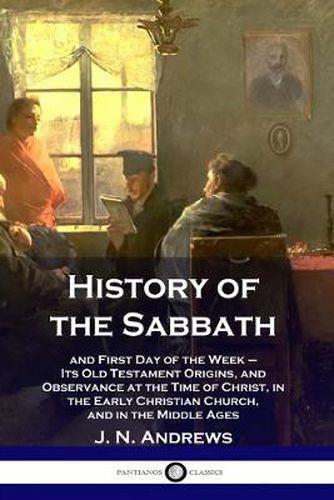Readings Newsletter
Become a Readings Member to make your shopping experience even easier.
Sign in or sign up for free!
You’re not far away from qualifying for FREE standard shipping within Australia
You’ve qualified for FREE standard shipping within Australia
The cart is loading…






This title is printed to order. This book may have been self-published. If so, we cannot guarantee the quality of the content. In the main most books will have gone through the editing process however some may not. We therefore suggest that you be aware of this before ordering this book. If in doubt check either the author or publisher’s details as we are unable to accept any returns unless they are faulty. Please contact us if you have any questions.
The history of the Sabbath is fascinating: beginning with its origins in the Biblical Old Testament, we are taken through millennia of changing traditions concerning the day of rest.
Spanning more than six thousand years, this investigation of Sabbath traditions traverses the earliest manifestations which followed the story of God creating Earth. The Genesis story describes God making the Earth in six days, before resting on the seventh to take satisfaction in His creation. In the society of the Hebrews, the day of rest was widely implemented and recognized as part of the yearly calendar; references later in the Old Testament confirm this.
By the time of Christ, adherence to the Sabbath was already an ancient tradition. Its importance was emphasized by Christ’s apostles, and its continuation in the Christian faith which developed in the years following the death of Jesus is described herein. The idea of the Sabbath taking place on a Sunday developed later, and the emergence of this idea is described herein.
Later chapters analyze how the Reformation of the church during the early 1500s affected the Sabbath tradition. With the Biblical lore becoming widely read, distinctions in marking the Sabbath occurred in different nations and denominations of Christianity. The final chapters of this book examine how the Sabbath was observed in Victorian England, and the United States.
$9.00 standard shipping within Australia
FREE standard shipping within Australia for orders over $100.00
Express & International shipping calculated at checkout
This title is printed to order. This book may have been self-published. If so, we cannot guarantee the quality of the content. In the main most books will have gone through the editing process however some may not. We therefore suggest that you be aware of this before ordering this book. If in doubt check either the author or publisher’s details as we are unable to accept any returns unless they are faulty. Please contact us if you have any questions.
The history of the Sabbath is fascinating: beginning with its origins in the Biblical Old Testament, we are taken through millennia of changing traditions concerning the day of rest.
Spanning more than six thousand years, this investigation of Sabbath traditions traverses the earliest manifestations which followed the story of God creating Earth. The Genesis story describes God making the Earth in six days, before resting on the seventh to take satisfaction in His creation. In the society of the Hebrews, the day of rest was widely implemented and recognized as part of the yearly calendar; references later in the Old Testament confirm this.
By the time of Christ, adherence to the Sabbath was already an ancient tradition. Its importance was emphasized by Christ’s apostles, and its continuation in the Christian faith which developed in the years following the death of Jesus is described herein. The idea of the Sabbath taking place on a Sunday developed later, and the emergence of this idea is described herein.
Later chapters analyze how the Reformation of the church during the early 1500s affected the Sabbath tradition. With the Biblical lore becoming widely read, distinctions in marking the Sabbath occurred in different nations and denominations of Christianity. The final chapters of this book examine how the Sabbath was observed in Victorian England, and the United States.